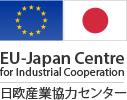

Economic Partnership Agreement
On 17 July 2018, the European Union and Japan signed an Economic Partnership Agreement (EPA), the biggest trade agreement ever negotiated by the EU that will create an open trade zone covering over 600 million people. The agreement entered into force on Friday, 1 February 2019.
To raise awareness of the opportunities this agreement offers and to help EU SMEs take advantage of them, the EU-Japan Centre has launched an EPA Helpdesk to support and guide EU SMEs in their search for relevant information. The "EPA Helpdesk" answers EPA-related queries, organises webinars and publishes information packs each of them composed of a factsheet and/or practical guide covering a specific topic or sector.
Below is the list of topics and sectors impacted by the EU-Japan Economic Partnership Agreement.
In each chapter, you will find among others:
- Factsheets and guides available
- Forthcoming webinar announcements
- Past webinar recordings
- Experts' Power-point presentations









